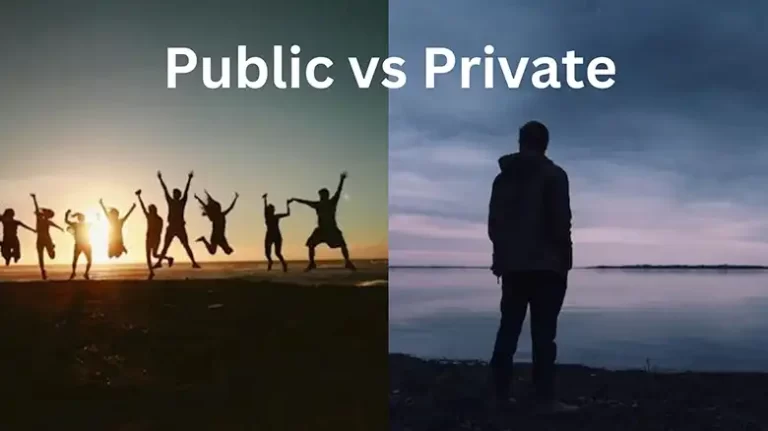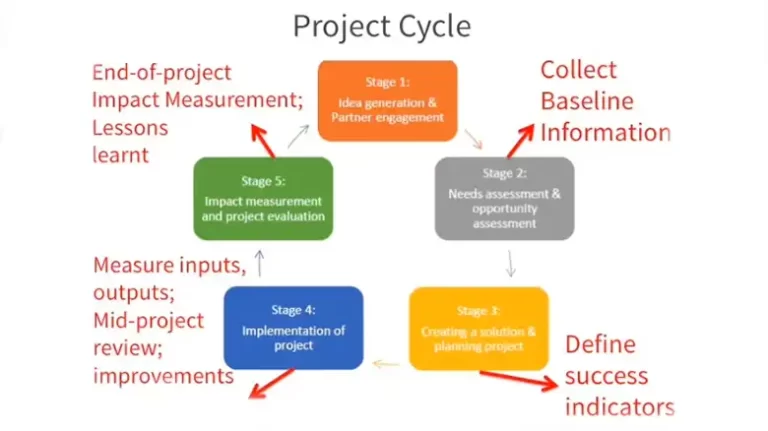What Is Personal Recognizance Bond and Why Should You Get One
In the complex tapestry of legal terminologies, the Personal Recognizance Bond (PR Bond) emerges as a pivotal thread, weaving through the intricate fabric of the justice system. Understanding its nuances is essential for anyone navigating the labyrinthine world of legal processes.

Understanding the Basics
In the realm of legal intricacies, the term “Personal Recognizance Bond” may seem like a complex weave of words. Let’s untangle this legal thread and delve into the fundamental aspects that constitute its core.
Defining the Foundation
At its essence, a Personal Recognizance Bond, often abbreviated as PR Bond, is a legal concept designed to provide individuals with an alternative to traditional monetary bonds. Unlike cash bonds or surety bonds that require financial collateral, a PR Bond operates on a foundation of trust.
Trust Over Tangibles
In simpler terms, when someone is granted a Personal Recognizance Bond, they are being entrusted to fulfill their legal obligations without the need for upfront financial backing. It’s a departure from the conventional practice where a defendant would need to pay a specific amount to secure their release.
A Pledge of Presence
The fundamental idea behind a PR Bond is rooted in the belief that the accused, based on their reputation and ties to the community, will honor their commitment to appear in court as required. It places emphasis on personal integrity rather than the possession of financial assets.
Eligibility Criteria
Understanding who qualifies for a PR Bond is crucial. Eligibility is often determined by factors such as the nature of the offense, criminal history, ties to the community, and the perceived risk of flight. Judges evaluate these elements to decide whether a PR Bond is a suitable option for an individual.
A Departure from Traditional Bonds
Comparing PR Bonds to their traditional counterparts, such as cash or surety bonds, underscores the distinctive nature of this legal instrument. While cash and surety bonds demand a financial transaction, a PR Bond hinges on the defendant’s commitment to the legal process.
How PR Bonds Work
To grasp the basics, it’s essential to understand the mechanics of how a PR Bond operates. Once granted, the individual is released from custody without the need to pay a specified amount. Instead, they sign a document—a recognizance—that binds them to fulfill their legal obligations.
Legal Obligations and Responsibilities
Upon being released on a PR Bond, individuals must adhere to specific conditions set by the court. These may include attending all court hearings, refraining from criminal activity, and, in some cases, adhering to travel restrictions. Failure to comply with these conditions can lead to the revocation of the PR Bond.
A Step Towards Rehabilitation
Beyond its procedural aspects, a PR Bond embodies a philosophical shift in the justice system.
It acknowledges the potential for rehabilitation and underscores the principle that legal proceedings should not unduly punish individuals who, based on certain criteria, are deemed trustworthy to fulfill their obligations.
Jurisdictional Differences
In the intricate landscape of legal proceedings, the application and interpretation of the Personal Recognizance Bond (PR Bond) vary significantly based on jurisdiction. Understanding these jurisdictional differences is paramount for those navigating the legal system.
Deciphering State-Specific Practices
In the United States, the implementation of PR bonds isn’t a uniform practice. Each state molds its own set of rules and criteria, leading to a tapestry of jurisdictional nuances. For instance, eligibility standards for PR bonds may differ, impacting who qualifies for this form of release.
While some states may be lenient in granting PR bonds, others might have more stringent criteria. These differences often reflect the unique legal culture and priorities of each jurisdiction.
The Role of Judicial Discretion
In the realm of PR bonds, judicial discretion plays a crucial role, acting as the compass guiding decisions. Judges exercise their authority to determine whether a defendant is a suitable candidate for a PR bond. However, the extent of this discretion can vary from one jurisdiction to another.
Some states may afford judges broader discretion, allowing them to consider a wider range of factors. In contrast, others may have more rigid guidelines, limiting the scope of judicial decision-making in the PR bond process.
Regional Impact on Bail Reform
The ongoing dialogue surrounding bail reform is felt differently in various jurisdictions. Some states may be at the forefront of adopting progressive measures, emphasizing the importance of alternatives like PR bonds to alleviate burdens on the accused.
Conversely, certain jurisdictions may be more conservative, sticking to traditional bail practices. Understanding these regional inclinations provides insight into the broader legal landscape and its responsiveness to evolving notions of justice.
Global Perspectives on Recognizance
Beyond the borders of the United States, Personal Recognizance Bonds take on different shapes. Internationally, countries approach pretrial release with diverse perspectives influenced by their legal systems, cultural norms, and societal structures.
Some nations may embrace the concept of PR bonds as a means to balance justice and individual rights. Others may rely on alternative methods, viewing the release of accused individuals through recognizance with skepticism.
Navigating Legal Traditions
The concept of PR bonds is not confined to a single legal tradition. Civil law jurisdictions and common law systems may interpret and apply PR bonds in distinct ways. The roots of these differences often trace back to historical legal frameworks that shape contemporary practices.
Understanding these jurisdictional disparities becomes essential for legal practitioners, policymakers, and individuals involved in the legal process. It underscores the dynamic nature of the law and the need for a nuanced approach when considering the role of PR bonds in diverse legal contexts.
Alternatives to PR Bonds
In the intricate realm of legal proceedings, the exploration of alternatives to Personal Recognizance Bonds (PR Bonds) becomes imperative. Understanding these alternatives not only broadens the spectrum of choices but also sheds light on diverse strategies for pretrial release.
Exploring Pretrial Services
Pretrial services stand as a robust alternative to the conventional PR Bonds. Rather than relying on an individual’s standing in the community, these services employ a systematic approach.
Defendants are supervised and assisted through various means, ensuring compliance with court directives without the necessity of monetary collateral.
Pretrial services encompass a range of interventions, from mandatory check-ins to educational programs aimed at guiding individuals through the legal intricacies they face. This alternative offers a structured support system, contributing to a more nuanced and tailored approach to pretrial release.
Electronic Monitoring: A Technological Frontier
As technology continues to shape the contours of the legal landscape, electronic monitoring emerges as a digital alternative to PR Bonds. Electronic monitoring utilizes GPS tracking, ensuring that defendants adhere to court-imposed restrictions without the need for a financial guarantee.
This alternative not only provides a technologically advanced method of supervision but also allows for real-time tracking, enhancing the efficiency of the legal process. It provides an avenue where compliance is monitored through the lens of innovation, reflecting the evolving nature of legal solutions.
Community-Based Programs: Building Support Networks
In certain jurisdictions, community-based programs serve as an alternative mechanism for pretrial release.
These programs leverage community resources to create a supportive environment for defendants awaiting trial. This approach emphasizes rehabilitation and community integration, focusing on addressing the root causes of legal entanglements.
Community-based programs often include counseling, mentoring, and skill development initiatives. By fostering a sense of responsibility within a community framework, this alternative aims to reduce recidivism and facilitate a smoother transition for individuals back into society.
Cash Bonds: A Traditional Path
While exploring alternatives, it’s crucial to acknowledge the more conventional route of cash bonds. Although distinct from PR Bonds, cash bonds involve the payment of a specified amount to secure release.
Unlike PR Bonds, the financial commitment in this case is not reliant on trust or community standing but solely on monetary means.
Cash bonds can provide a straightforward avenue for those who possess the financial means to secure their release. However, this method may not be accessible to everyone, highlighting the importance of understanding and considering a range of alternatives within the legal framework.
Public Awareness Campaigns
In the realm of legal intricacies, public awareness campaigns stand as beacons, illuminating the path to understanding the nuances of Personal Recognizance Bonds (PR Bonds). This section delves into the vital role these campaigns play in demystifying the complexities surrounding PR Bonds.
The Importance of Clarity
Public awareness campaigns serve as educational lifelines, aiming to simplify the often-confusing world of legal terminologies. Their primary mission is to provide clarity on what a Personal Recognizance Bond entails, fostering a better-informed society.
Breaking Down Legal Jargon
One of the fundamental goals of these campaigns is to break down the barriers of legal jargon. By translating complex terms into everyday language, they ensure that the broader public can grasp the concept of PR Bonds without feeling overwhelmed.
Empowering Communities
These campaigns empower communities by arming them with knowledge about their legal rights and options. Understanding the availability and benefits of Personal Recognizance Bonds can transform a potentially daunting legal process into a comprehensible and navigable terrain.
Dispelling Myths and Misconceptions
Public perception often sways under the influence of myths and misconceptions. Awareness campaigns take on the crucial task of dispelling these unfounded notions, ensuring that individuals have accurate information about PR Bonds.
Addressing Common Concerns
Campaigns systematically address common concerns, such as the misconception that PR Bonds are a loophole for the accused to evade consequences. By presenting accurate information, they dismantle these misconceptions and promote a more informed dialogue.
Fostering Trust in the System
Building trust in the legal system is another facet of awareness campaigns. By shedding light on the rigorous processes involved in granting PR Bonds, these campaigns aim to cultivate a sense of confidence in the fairness and transparency of the legal framework.
Initiatives for Education
Beyond dispelling myths, public awareness campaigns take proactive measures to educate the masses about Personal Recognizance Bonds.
Workshops and Seminars
Organizing workshops and seminars becomes a cornerstone of these initiatives. These events bring legal experts and the community together, providing a platform for interactive discussions and clarifications on PR Bonds.
Educational Materials
Campaigns often produce accessible educational materials, such as pamphlets and brochures, to distribute widely. These materials serve as quick references, offering essential information about PR Bonds and how they function.
Collaborative Efforts with Media
In an age dominated by digital information, awareness campaigns leverage various media channels to maximize their reach.
Online Platforms
Utilizing online platforms, these campaigns disseminate informative content through websites, social media, and online forums. This digital presence ensures that accurate information about PR Bonds is accessible to a wide audience.
Traditional Media
Collaborations with traditional media outlets, such as newspapers and television stations, further amplify the campaign’s reach. Public service announcements and feature articles contribute to a comprehensive dissemination strategy.
Measuring Impact and Progress
A crucial aspect of public awareness campaigns is assessing their impact and making ongoing adjustments to ensure effectiveness.
Surveys and Feedback
Conducting surveys and gathering feedback from the community help gauge the level of understanding post-campaign. This information guides adjustments to the messaging and delivery methods for continuous improvement.
Collaborative Evaluation
Working closely with legal authorities and community leaders, campaigns evaluate their strategies collaboratively. This ensures that the information provided aligns with legal standards and community needs.
Related Questions
Q1: What is a Personal Recognizance Bond?
A1: A Personal Recognizance Bond, commonly known as a PR Bond, is a legal arrangement where a defendant is released from custody without the need for monetary collateral. Instead, the release is based on the defendant’s commitment to appear in court as required.
Q2: How does a PR Bond differ from other types of bonds?
A2: Unlike traditional bonds that require a financial deposit, a PR Bond relies on the defendant’s reputation and community standing. It’s a commitment to abide by court proceedings without the need for cash or a surety.
Q3: Who is eligible for a Personal Recognizance Bond?
A3: Eligibility for a PR Bond varies, but generally, individuals with a low flight risk and non-violent offenses are considered. Judges evaluate factors such as ties to the community, criminal history, and the nature of the charges.
Q4: What are the advantages of a PR Bond?
A4: PR Bonds offer financial relief for defendants who may not afford traditional bonds. They also contribute to reducing jail overcrowding, promote rehabilitation, and allow individuals to maintain employment and family connections.
Q5: Are PR Bonds granted in all jurisdictions?
A5: While PR Bonds are widely used, their availability depends on jurisdictional policies. Some states may have specific guidelines or restrictions on their use, and certain offenses may not qualify for a PR Bond.
Q6: How does the application process for a PR Bond work?
A6: Defendants or their legal representatives typically request a PR Bond during arraignment. The judge considers various factors, including ties to the community, criminal history, and the severity of the charges, before making a decision.
Q7: Can a PR Bond be revoked?
A7: Yes, a PR Bond can be revoked if the defendant fails to comply with court orders, misses scheduled appearances, or engages in unlawful activities while on release. Compliance with all conditions is crucial to maintaining a PR Bond.
Q8: What are the alternatives to PR Bonds?
A8: Alternatives include pretrial services, electronic monitoring, community-based programs, and traditional cash bonds. Each alternative has its unique features, addressing different aspects of pretrial release.
Q9: Are PR Bonds only for minor offenses?
A9: While PR Bonds are often associated with non-violent and minor offenses, they can be granted for more serious charges depending on the circumstances, the defendant’s background, and the judge’s discretion.
Q10: How can public awareness campaigns impact the perception of PR Bonds?
A10: Public awareness campaigns play a crucial role in dispelling myths and educating the community about the purpose and benefits of PR Bonds. By fostering understanding, these campaigns contribute to a more informed public discourse on legal matters.
Conclusion
In the finale of our exploration, recap the key insights into Personal Recognizance Bonds. With a call to action, encourage readers to delve deeper into the realm of legal intricacies, empowering them with knowledge that transcends the courtroom.





